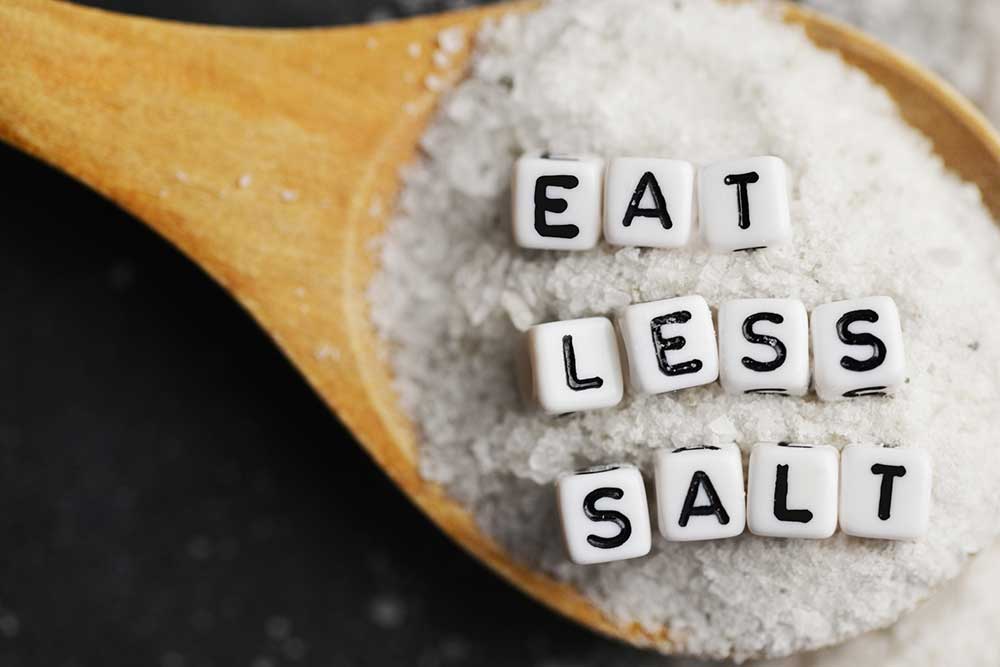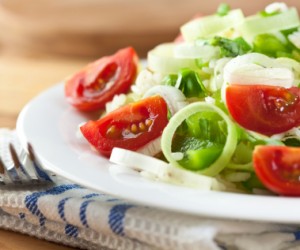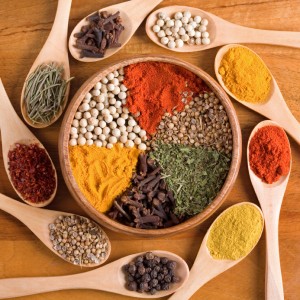How To Reduce Salt Intake – 6 Tips
Here are six easy-to-implement tips for reducing the salt in your diet.

How To Reduce Salt Intake:
1. Follow the Pritikin “1 to 1” Rule:
To limit your sodium consumption to optimal levels of 1,500mg or less a day, the doctors and dietitians at the Pritikin Longevity Center & Spa recommend the “1mg of sodium per 1 calorie” rule, that is, curb your intake of foods that have more than 1 mg of sodium per calorie.
For condiments like pasta sauces, barbecue sauces, and salsa, a reasonable and healthful sodium-to-calorie ratio is no more than 4mg of sodium per calorie.
The good news: Natural foods like fruits, vegetables, whole grains, and beans tend to have very low levels of sodium – only about ¼ mg of sodium per calorie, so if your diet is centered on these healthful foods, you’re definitely on the right track for lowering sodium consumption in your overall diet.
 2. Skip the Soup; Order the Salad
2. Skip the Soup; Order the Salad
Restaurant soups, even those full of healthy ingredients like veggies and beans, are notoriously high in sodium – often 2,000+ milligrams per bowl. “For a first course, you’re far better ordering a salad full of fresh vegetables,” recommends Kimberly Gomer, Director of Nutrition at Pritikin. “Toss your salad with the vinegar of your choice and a teaspoon of olive oil, and you have a goldmine of nutrients and next-to-nothing in the way of salt and calories.”
3. Don’t Trust Your Taste Buds
Some foods, like potato chips, are obviously loaded with sodium. You can taste it. Others aren’t so obvious. A can of cream of mushroom soup, for example, can have five times more sodium than a single-serving bag of potato chips. “That’s why it’s always important to read food labels,” counsels Kimberly Gomer, Director of Nutrition at the Pritikin Longevity Center. “It’s amazing how many foods don’t taste salty but in fact are loaded with salt.”
 4. Season Creatively.
4. Season Creatively.
You don’t have to give up flavor if you’re cutting back on sodium. There’s a whole world of seasonings that can add zest to your food. For broiled chicken, use fresh cilantro, fresh onion, and salsa. For seafood, used chopped fresh dill, fresh lemon, and a little dried mustard. Other tasty alternatives include hot red pepper flakes, fresh garlic, balsamic vinegar, low-sodium tomato sauce, low-sodium marinades, low-sodium seasoning blends, and freshly ground black pepper.
Every now and then, check out what’s happening at your supermarket. Because major health institutions like the American Heart Association and the U.S. Dietary Guidelines now strongly urge Americans to cut back on salt, several food manufacturers are rushing to roll out tasty new options.
5. Be Patient. You’ll Be Rewarded!
Did you know that excess sodium can dull your taste buds? The good news: In a few weeks or months you can curb your high-salt cravings, says Dr. Gary Beauchamp, director of Monell Chemical Senses Center in Philadelphia, who discovered in the 1980s that people’s “bliss point” or the “just right” amount of salt could be lowered by following a strict low-sodium diet. In one five-month study, he found that college students’ average daily consumption of sodium dropped about 40%.
“By lowering your sodium needs, your taste buds come alive again,” says Pritikin’s Kimberly Gomer. “We see it all the time at the Pritikin Center. Guests tell us that for the first time they’re ‘tasting” the natural sweetness of corn on the cob, the nuttiness of whole grain breads and pastas. It’s a whole new world of flavors once you’re rid of the salt habit.”
6. Buy Fresh Food.
Fresh vegetables, poultry, fish, and lean meat tend to have far less sodium than canned, smoked, or processed foods. Rinse canned foods, such as tuna and beans, to remove a lot of the sodium. Another bonus of fruits and vegetables: Many are rich sources of potassium, magnesium, and calcium. Studies have found that foods rich in these minerals help blunt some of the toxic effects of sodium.
These six tips for how to reduce salt intake can dramatically improve your health by dramatically decreasing your risk of life-threatening ills like high blood pressure, heart disease, and strokes.